Our classic pavlova features a crisp meringue shell, silky whipped cream, and a stunning array of fresh berries. You’ll never believe how easy it is to make!
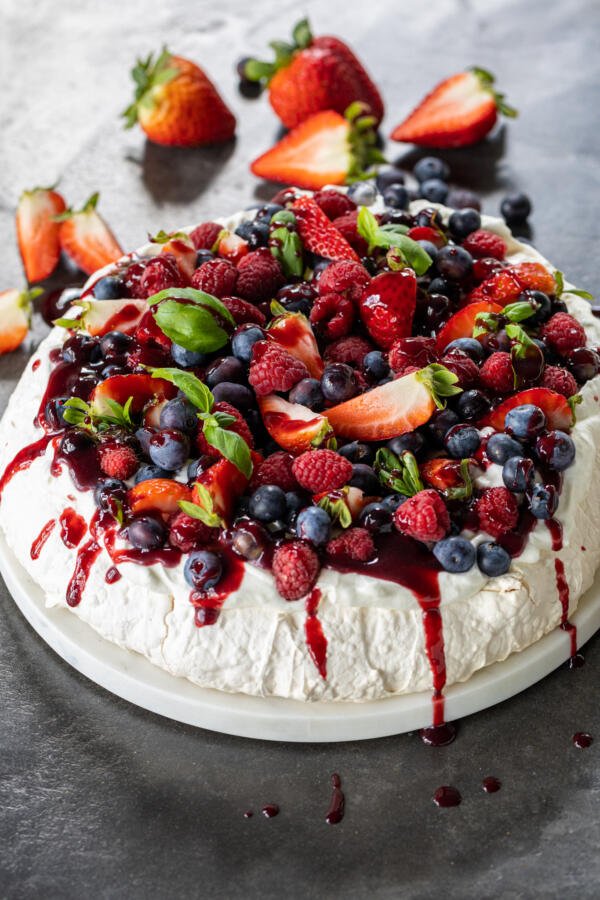
What Is Pavlova?
Pavlova is a circular meringue shell filled with cream and fresh fruit. What sets pavlova apart from regular meringue, you may ask? Pavlova has a characteristically marshmallow-soft interior, while regular meringue is crisp all the way through. This exquisite dessert was named after Anna Pavlova, a Russian ballerina who toured Australia and New Zealand in the 1920s.
I find that the berry topping makes this dessert special and fancy enough for a special occasion while still being easier to decorate than traditional cakes. This is my go-to dessert for summer hosting, because I can make the pavlova base ahead of time and quickly top with cream and berries just before serving.
Gluten Free Goodness: I never knew what dessert to make for my gluten-free friends and family until discovering this recipe! It’s a crowd-pleaser without sacrificing any flavor.
How To Make Pavlova
Considering the dessert’s impressive appearance, this pavlova recipe is unbelievably easy. Whip up the meringue, bake the shell, and get to topping!
- Prepare the oven and pan: Preheat the oven to 300°F. Line a baking sheet with parchment paper and trace an 8-inch circle on it.
- Make the meringue: In the bowl of a stand mixer, whip the egg whites and cream of tartar on high speed until frothy. Decrease the speed to medium-high and gradually add the sugar. Beat until stiff peaks form, about 8-10 minutes.
- Bake the meringue: Spoon the meringue onto the prepared traced circle on the baking sheet. Transfer the meringue into the oven and immediately decrease the temperature to 250°F. Bake the meringue for one hour and 30 minutes, then turn off the oven and let the meringue cool completely inside the oven.
- Add the toppings: Make the whipped cream and spread it evenly onto the baked meringue, then top with fresh fruits. If not serving right away, hold the toppings until shortly before serving!
Baking for a crowd? Make mini pavlovas for individual portions. Instead of spreading the meringue into a big circle, pipe it into 3-inch circles using this set.
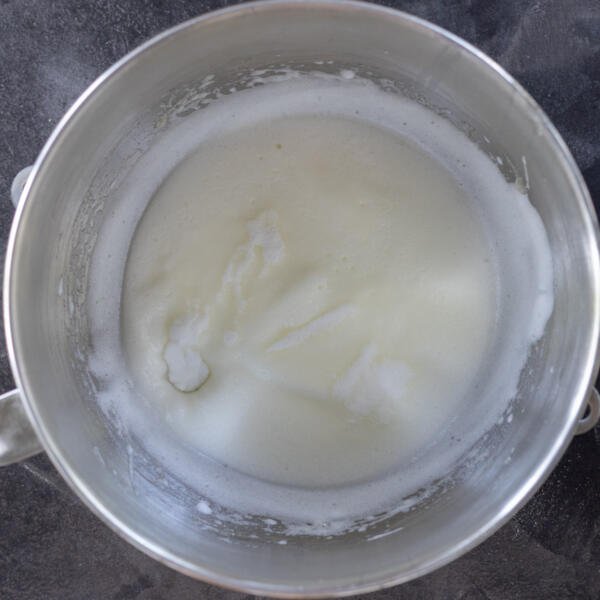
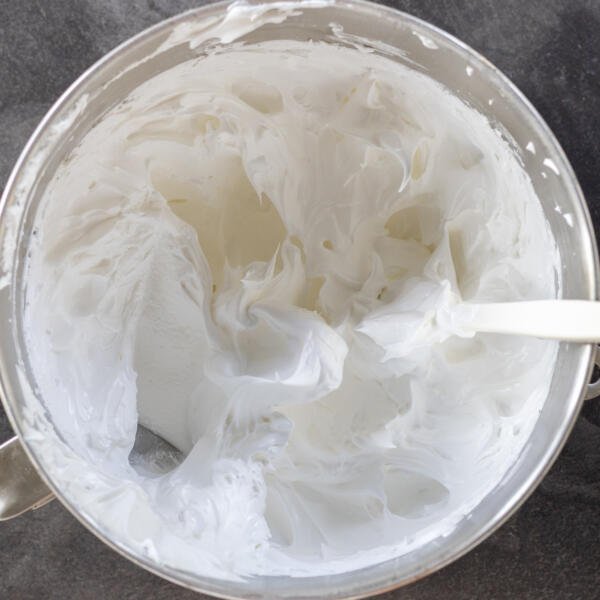
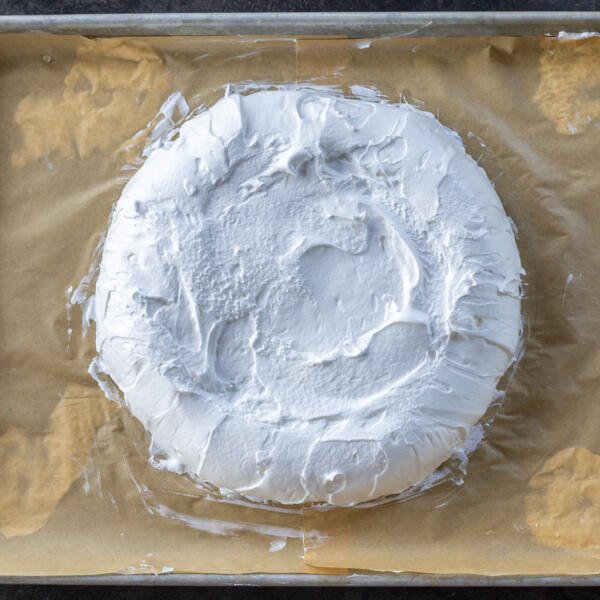
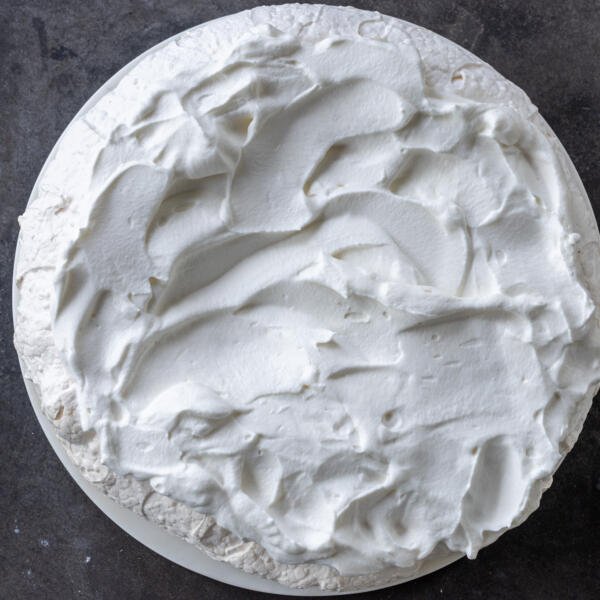
Best Pavlova Toppings
Think of pavlova as a work of art… the meringue shell is the canvas, and the innumerable topping options are the paint. Here are a few suggestions that inspire us!
- Lemon curd: Add a drizzle of lemon curd for a tart flavor (bonus points for lemon zest on top!).
- Jam: Swirl strawberry jam, blackberry jam, or apricot jam into the cream for extra fruity sweetness.
- Berries: Load up on fresh raspberries, strawberries, blackberries, or blueberries to get those antioxidants in!
- Other fruits: Get tropical with passion fruit, mango, pineapple, or kiwi. Or, use in-season stone fruits like peaches, plums, nectarines, or apricots.
- Garnishes: Take your pavlova over the top with chocolate shavings, mint leaves, or edible florals. Let your inner artist shine!
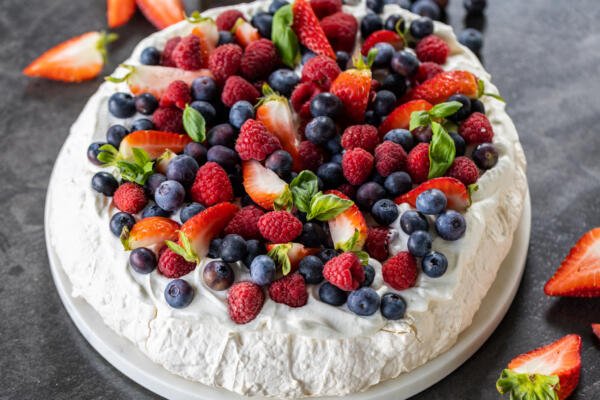
Tips for Foolproof Pavlova
Do you want to know the secret to pavlova that’s perfectly crisp on the outside and melt-in-your-mouth on the inside? Follow these tips, and you’ve got the answer!
- Clean the mixing bowl. Any amount of grease prevents the egg whites from whipping up properly, so wipe down the bowl with a paper towel dampened with white vinegar or lemon juice before starting.
- Use room temperature egg whites. This helps the whites hold onto air and whip up faster.
- Opt for caster sugar. Caster sugar (or superfine sugar) dissolves much better than regular granulated sugar. If the sugar doesn’t fully dissolve, your meringue will bake unevenly. To test if the sugar has dissolved, rub the meringue between your thumb and index finger — if it’s still grainy, keep mixing.
- Add cornstarch (optional). One teaspoon of cornstarch is plenty to give the pavlova a fluffier, more marshmallowy texture without tasting chalky. If using it, fold the cornstarch into the whipped egg white mixture before baking.
- Decorate the meringue. Use an offset spatula to create decorative dips and peaks in the meringue before baking. Sweep the outer edge of the circle upwards to elevate the appearance. Make it as classy or rustic as you like!
- Be gentle. Meringue is very delicate, so take your time when peeling the parchment paper off after it bakes. Place the shell onto a serving platter and then add the toppings — not the other way around. Minor cracks and sinkage is completely normal.
- Avoid overbeating the cream. Use heavy cream straight from the fridge to ensure it whips up properly, and take care not to overbeat it — we don’t want butter! The cream is done when it is spreadable and holds soft peaks.
Hot tip: To prevent slipping and sliding as you form the pavlova, “glue” the parchment paper down with a teaspoon of the meringue in all four corners of the baking sheet.
Make Ahead
Are you ready for a time-saving hack? Leave the meringue shell in the oven overnight after baking (just make sure no one turns the oven on!), or place it in an airtight container once it cools for up to 24 hours. When you’re ready to dig in, simply add the toppings!
Storage
We highly recommend enjoying the assembled pavlova right away because it loses its crispness over time. But if (by some miracle) there’s leftovers, store them in an airtight container in the refrigerator for one day.
More Meringue Recipes
- Meringue Cookies — Crisp meringue bites dipped in chocolate and nuts
- Meringue Napoleon Cake — Decadent cake layered with meringue, toasted nuts, and a dulce de leche cream
- French Macarons — Chewy meringue-based almond cookies sandwiched with the filling of your choice
- Eton Mess — Deconstructed pavlova with meringue cookies, cream, and strawberries
Recipe
Ingredients
- 6 eggs whites room temperature
- 1 tsp cream of tartar
- 1 1/2 cups caster sugar
Cream
- 1 1/2 cups heavy whipping cream very cold
- 1/4 cup powdered sugar
- 1 tsp vanilla extract
Garnish
- 2 cups fresh berries or other fruits
Instructions
- Preheat the oven to 300°F. Line a baking sheet with parchment paper. Trace an 8 inch plate on the center of the parchment paper with pencil, then turn the paper upside down on the baking sheet and set aside.
- In the bowl of a stand mixer, add the egg whites and cream of tartar. Beat on high speed using the whisk attachment until the whites are frothy and soft peaks form. Continue whisking on medium-high speed, adding the sugar about one tablespoon at a time.
- Beat until the sugar is completely dissolved and the mixture is thick and glossy, about 8-10 minutes.
- Spoon the meringue onto the parchment paper. Using the drawn circle as a guide, shape the meringue neatly into a round, level circle.
- Place the meringue into the preheated oven and reduce the temperature right away to 250°F. Bake the meringue for 1 hour and 30 minutes, or until it is completely dry and hard. Turn off the oven and allow the meringue to cool completely inside for a few hours (or overnight).
- Before serving, using a hand mixer or stand mixer beat together the heavy cream, powdered sugar, and vanilla until soft peaks form.
- Top the pavlova with the cream and fruit of choice. Serve immediately and enjoy!
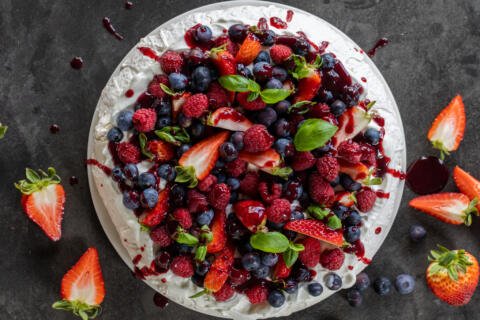
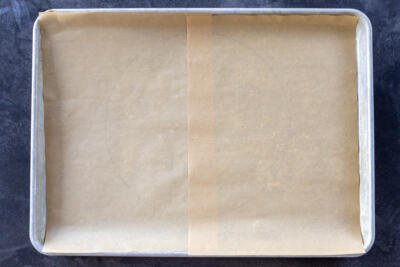
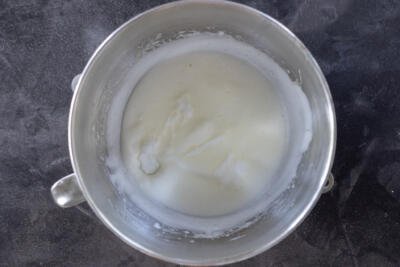
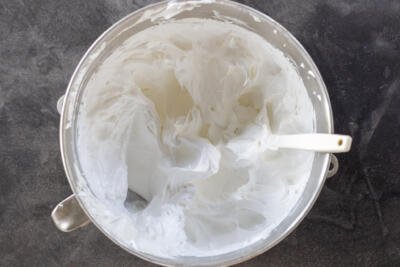
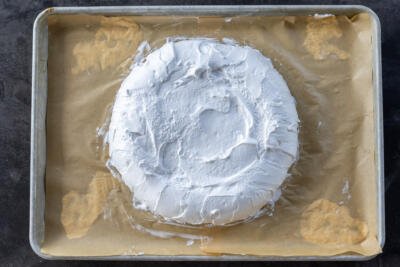
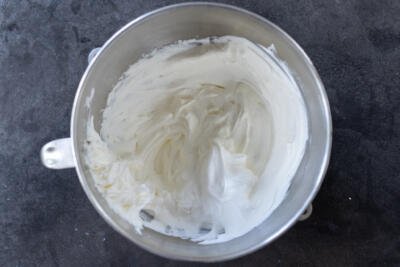
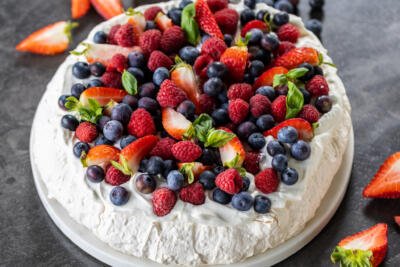
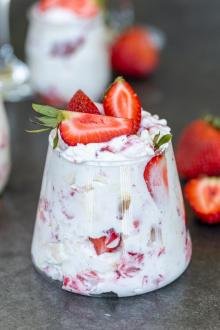
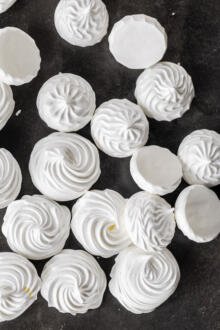
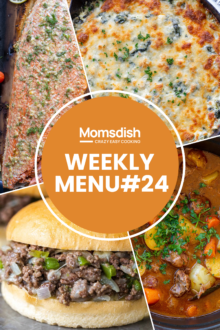
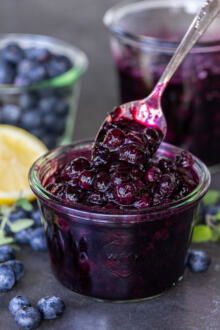

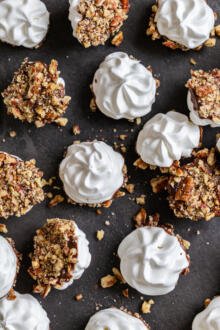
No Comments